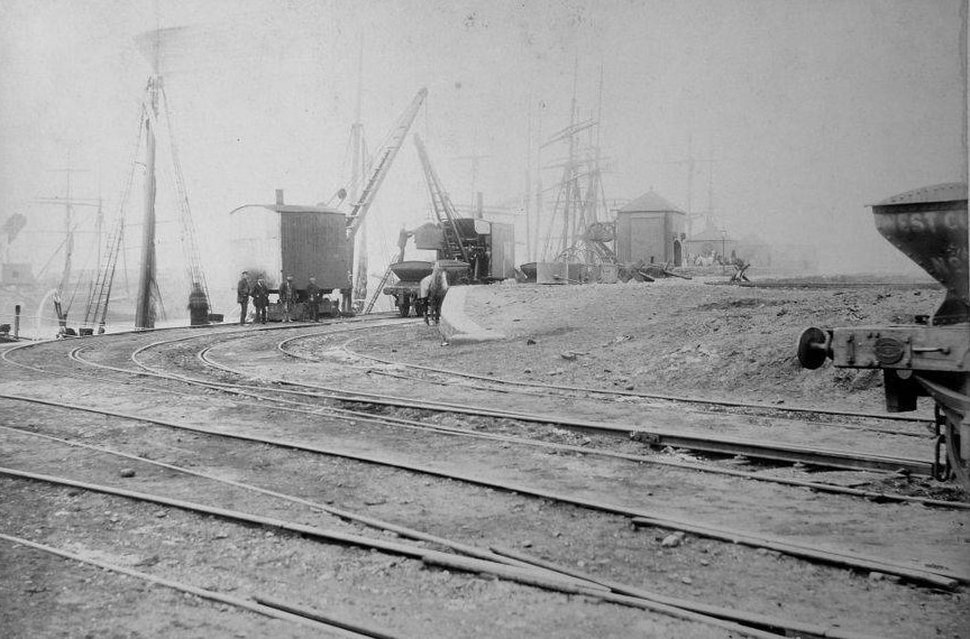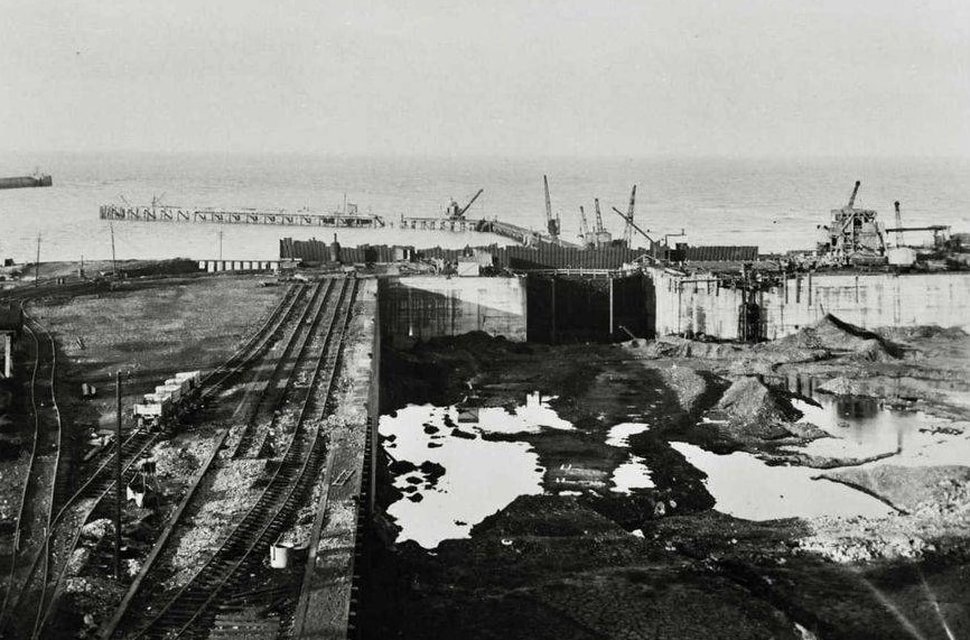A LOOK BACK AT THE HISTORY OF THE PORT OF WORKINGTON
In the days when the only transport was either walking or on the back of a horse, a safe haven for boats was highly desirable and Workington was just that. It had easy access up a river at high tide with very sheltered moorings for vessels.
As early as 1590 reports relate to a fleet of fishing boats using this haven, but by early 1700 trade started to increase fast with coal to Ireland and lime to Scotland being the primary exports and timber from Scotland being the primary import cargo (as it still is today) 1775 saw ambitious plans drawn up to improve and increase the existing quays along the river bank and inlets.
With trade continually increasing, it was decided to build a dock on the north bank of the river Derwent, this was to open for business in 1862 and was to be called the Lonsdale Dock. Ships of up to 400 tons could use the new port, but there were some problems. The dock entrance led directly into the river so when vessels entering turned the required 45 degrees to enable them to line up for entry, the river currents would push on the side of the ship and move it out of position, which, no doubt, would have caused many a raised eyebrow! Also, there was limited space to perform this necessary manoeuvre.
By the end of the 19th century trade was booming and something had to done about the docking problems, so plans were made to enlarge and improve access to the port. After many delays and setbacks, work finally got underway and the grand new Prince of Wales Dock was officially opened by the then Prince of Wales (later King Edward V111) in June 1922. This new dock had its entrance facing north west and the sea and could now handle ships of up to 12000 tons and 450 feet in length with ease.
Nowadays, with the demise of steel making in Workington and the port no longer handling the large ore carriers which was its mainstay for many years, the required dredging of the entrance channel has been reduced. When the ore carriers were using the port the dredger cleared the channel right to the edges and beyond but now the dredging is kept to the minimum required.
In the days when the only transport was either walking or on the back of a horse, a safe haven for boats was highly desirable and Workington was just that. It had easy access up a river at high tide with very sheltered moorings for vessels.
As early as 1590 reports relate to a fleet of fishing boats using this haven, but by early 1700 trade started to increase fast with coal to Ireland and lime to Scotland being the primary exports and timber from Scotland being the primary import cargo (as it still is today) 1775 saw ambitious plans drawn up to improve and increase the existing quays along the river bank and inlets.
With trade continually increasing, it was decided to build a dock on the north bank of the river Derwent, this was to open for business in 1862 and was to be called the Lonsdale Dock. Ships of up to 400 tons could use the new port, but there were some problems. The dock entrance led directly into the river so when vessels entering turned the required 45 degrees to enable them to line up for entry, the river currents would push on the side of the ship and move it out of position, which, no doubt, would have caused many a raised eyebrow! Also, there was limited space to perform this necessary manoeuvre.
By the end of the 19th century trade was booming and something had to done about the docking problems, so plans were made to enlarge and improve access to the port. After many delays and setbacks, work finally got underway and the grand new Prince of Wales Dock was officially opened by the then Prince of Wales (later King Edward V111) in June 1922. This new dock had its entrance facing north west and the sea and could now handle ships of up to 12000 tons and 450 feet in length with ease.
Nowadays, with the demise of steel making in Workington and the port no longer handling the large ore carriers which was its mainstay for many years, the required dredging of the entrance channel has been reduced. When the ore carriers were using the port the dredger cleared the channel right to the edges and beyond but now the dredging is kept to the minimum required.












